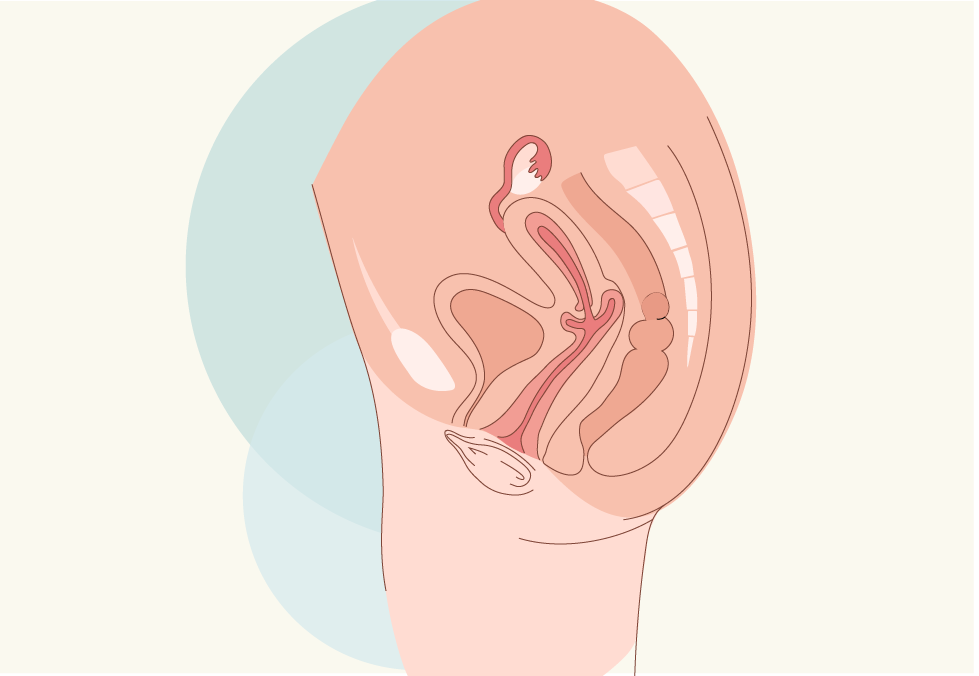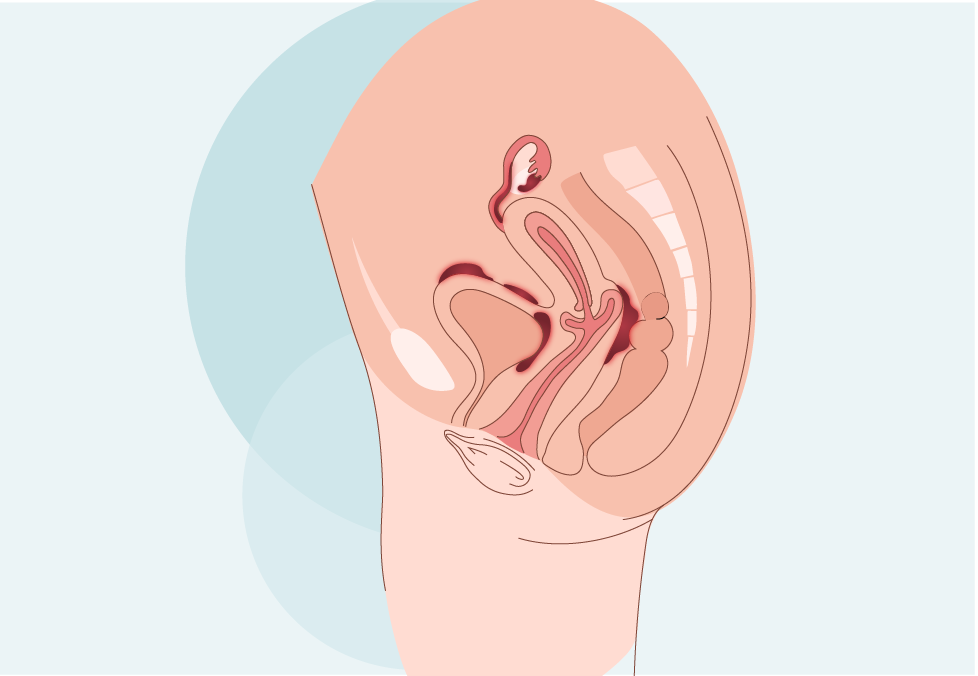Endometriosis
What is endometriosis?
Endometriosis is a condition that affects approximately 1 in 10 people1. It occurs when tissue, similar to the tissue that grows on the inside of the uterus (called the endometrium), grows on other parts of the body. Often, endometriosis grows on the lining of the abdomen, but it can also be present on the uterus, ovaries, bladder, or colon1. In rare cases it can also grow in other locations.

Click and drag the slider in the image below to view the pelvis with and without endometriosis.


Note: There are different types of endometriosis such as peritoneal endometriosis, endometriotic cysts of the ovary and deep-infiltrating endometriosis. The image above is an example of deep-infiltrating endometriosis which occurs in about 6% of people who have endometriosis2. Only a health care provider can determine which type of endometriosis you might have.
Symptoms of endometriosis
The symptoms of endometriosis are different for everyone. Some people don’t have any symptoms while others feel pain. The common symptoms of endometriosis include:
• Pain felt in the pelvis during periods (dysmenorrhea)
• Persistent or chronic pain felt in the pelvis
• Pain felt during and/or after sex (dyspareunia)
• Pain felt during bowel movements (dyschezia)
• Pain felt during urination (dysuria)
• Abnormal bleeding during periods
• Difficulty getting pregnant
Endometriosis and painful sex
Sex can be a satisfying experience but endometriosis can make sex painful. More than 50% of people with endometriosis feel pain during and/or after vaginal penetration3.
People with endometriosis who have sex describe their pain in different ways. Some people report minimal pain while others report more severe pain3.
Endometriosis can result in two types of pain:
- Yong, P. J., Williams, C., Yosef, A., Wong, F., Bedaiwy, M. A., Lisonkova, S., & Allaire, C. (2017). Anatomic sites and associated clinical factors for deep dyspareunia. Sexual Medicine, 5(3), e184-e195. doi:10.1016/j.esxm.2017.07.001
- Alimi, Y., Iwanaga, J., Loukas, M., & Tubbs, R. S. (2018). The Clinical Anatomy of Endometriosis: A Review. Cureus, 10(9), e3361. doi:10.7759/cureus.3361
- Yong, P. J. (2017). Deep dyspareunia in endometriosis: A proposed framework based on pain mechanisms and genito-pelvic pain penetration disorder. Sexual Medicine Reviews, 5(4), 495. doi: 10.1016/j.sxmr.2017.06.005
